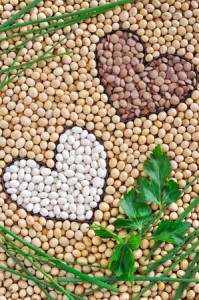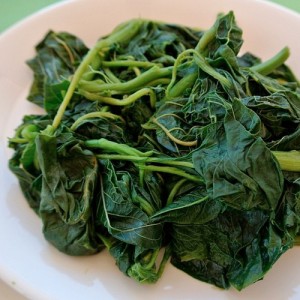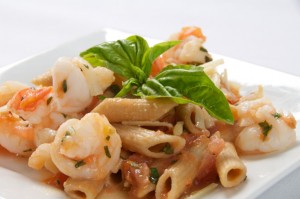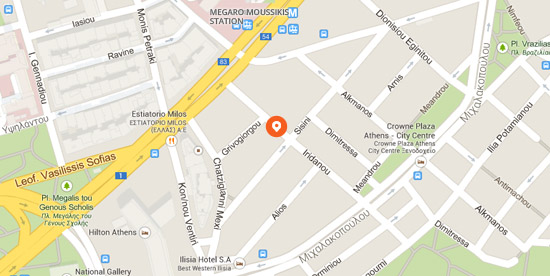What to eat when fasting
The forty day period before the Holy Week is one of fasting, and those who abide by it do not eat red and white meat, fish, dairy and eggs. While some days not even oil is consumed. By fasting we benefit not only by avoiding meat but also by shifting the center of gravity of our diet towards the consumption of vegetables, fruits, legumes and grains. All of them are important for a healthy diet. More to the point, they should be consumed more relative to meat. Nevertheless the truth is that we usually eat more meat and high in fat foods than we should. Hence this period of fasting is an opportunity to make certain temporary changes in our diet, which if made permanent may have beneficial for our health. We will talk below for certain fasting foods and their benefits.

Legumes
Those are lentils, beans, chickpeas, split peas and dried broad beans. Ideally we should eat 3 portions per week which-relative to each kind of legume-is equal to a quantity of 150-200 gr per portion. Legumes contain vitamins and minerals, carbohydrates, protein and fiber while on the contrary have very little saturated fat. Just like whole grains they help us feel “full” for longer, which in turn leads us not to eat between meals, a habit which may be contributing in weight gain. Also, they protect our health by facilitating our bowel’s function, our blood sugar’s management and us keeping healthy cholesterol levels. Legumes can be the first or the second course (e.g. as a salad) in a meal and could be combined with pasta and vegetables.
On top of the popular ones there are many more recipes for legumes, and each one may be cooked in different ways. For instance chickpeas may be made a soup on their own, with potatoes, tomato or we can make chickpea balls.
Vegetables
We may distinguish three categories. There are those that can be eaten raw (although not only) like tomato, cucumber, lettuce, cabbage, carrot, peppers and onion. Another category is those which have to be cooked before consumed like greens, broccoli, squash, beet, spinach, mushrooms, eggplant and cauliflower. Third and last are starchy vegetables like fresh peas, corn, potato and pumpkin. A portion of  vegetables equals 150-200 gr of raw or cooked vegetables. It is advisable to consume 4 portions daily. Certain vegetables, like spinach and slender amaranth, provide us with the calcium that our body needs but doesn’t receive from dairy foods during this period of fastening. Simultaneously they are a great source of vitamins, trace elements, minerals and fiber. The latter increases our feeling of satiation after the meal, without necessarily having to eat a large quantity. Concerning calcium intake, soy milk and soy cheese can also be a solid source of calcium during the days of fast.
vegetables equals 150-200 gr of raw or cooked vegetables. It is advisable to consume 4 portions daily. Certain vegetables, like spinach and slender amaranth, provide us with the calcium that our body needs but doesn’t receive from dairy foods during this period of fastening. Simultaneously they are a great source of vitamins, trace elements, minerals and fiber. The latter increases our feeling of satiation after the meal, without necessarily having to eat a large quantity. Concerning calcium intake, soy milk and soy cheese can also be a solid source of calcium during the days of fast.
Vegetables are usually either consumed raw or boiled. However there is a group of dishes of vegetables cooked with olive oil known as “ladera”. Fresh green beans, tomatoes and peppers filled with rice (gemista), imam baildi, briam, green peas and others. All those provide us with a variety of options and are very tasty. And when temperatures go up they can be even more enjoyable.
Wholegrain products
We recently wrote about the beneficial effect that whole grains can have. Be it bread, pasta, pastry, pies and others. Recommended quantity for consumption is 5-8 portions per day. Where the equivalent of a portion may be 1 slice of bread or 2 crisp breads or half a cup of pasta or half a cup of breakfast cereals or their calorific equal in pie. Grains can accompany almost every other food. That isn’t true just about bread but about pasta and dough too, which are often consumed with legumes and vegetables.
Seafood
The term has prevailed in denoting shellfish, such as molluscs, crustaceans and echinoderms. Squid, octopus, cuttlefish, shrimp, oysters and mussels are the most frequently consumed shellfish. Seafood can be served together with legumes, vegetables and grains in both new and traditional recipes. Even though they do not contain the same amount of omega-3 fatty acids compare to oily fish, they are good sources.







